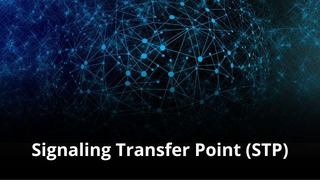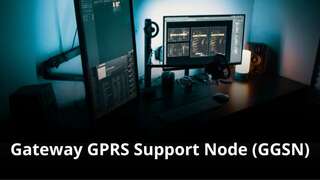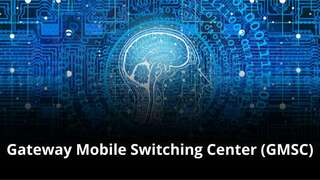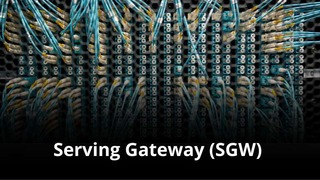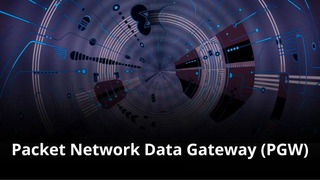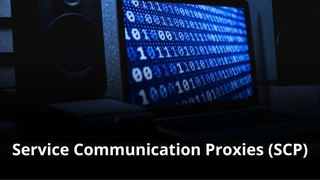Introduction about the Home Subscriber Server (HSS)
The Home Subscriber Server (HSS) is a central and fundamental component within the core network architecture of mobile communication systems. Understanding its role is key to grasping how mobile networks operate and manage user services. This server acts as a master user database, serving control elements in the network to facilitate user authentication, authorization, and service provisioning. You’ll find it essential for any operator aiming to deliver reliable mobile connectivity and diverse services to its subscribers.
What are the details of a Home Subscriber Server (HSS)?
- History and Evolution of the Home Subscriber Server
- Core Utility and Functionality of the HSS
- Technical Integration and Data Model
- HSS Ownership for MVNOs and IoT Companies
- Organizational Impact of HSS Ownership?
- Redundancy and High Availability
- Impact of 4G, 5G, and 6G on the HSS
- Frequently Asked Questions about the HSS
- Summary
History and Evolution of the Home Subscriber Server
The concept of a central user repository evolved significantly over the generations of mobile technology. Before the Home Subscriber Server (HSS), its predecessor was the Home Location Register (HLR), which was the master database primarily used in 2G (GSM) and 3G (UMTS) networks. As networks advanced into the Long-Term Evolution (LTE) era (4G), the need for enhanced functionality and tighter integration with packet-switched services emerged. This necessitated the development of the HSS. The HSS expanded upon the HLR’s capabilities, becoming the unified server for both circuit-switched and packet-switched domains. This evolution provided a more efficient and consolidated approach to subscriber data management. The evolution is:
Core Utility and Functionality of the HSS
What is the HSS Used For?
The Home Subscriber Server (HSS) is the definitive source for all subscriber-related information within a mobile network. Its primary purpose is to hold comprehensive subscriber profiles, which include details like authentication vectors, service permissions, and quality of service (QoS) parameters. It is crucial for managing the entire subscriber lifecycle, from initial provisioning to deactivation. Deploying an HSS is necessary to ensure users can connect, authenticate, and receive their subscribed services correctly and securely.
Key Functions of the Home Subscriber Server
Lets investigate the core functions of the Home Subscriber Server (HSS) to understand its critical role in network operations:
- Authentication: It verifies the identity of the mobile user via the SIM card.
- Authorization: It determines which network services a subscriber is permitted to use.
- Mobility Management: The HSS tracks the subscriber’s location within the network.
- Subscriber Profile Storage: It maintains a permanent, detailed record of all user data and settings.
- Service Profile Management: The server stores information on the specific services a subscriber has purchased.
- IP Multimedia Subsystem (IMS) Support: It is vital for enabling Voice over LTE (VoLTE) and other multimedia services.
- Roaming Management: The HSS provides data necessary for subscribers to use services while outside their home network.
- Session Binding: It links the user’s various ongoing communication sessions together.
- Provisioning: The HSS allows for the creation, modification, and deletion of subscriber data.
Technical Integration and Data Model
Integration with Other Systems
The Home Subscriber Server (HSS) does not operate in isolation. It is an extensively connected network element. Examine its key integration points to appreciate its central role. It connects primarily to the Mobility Management Entity (MME) in the 4G core network for mobility and session control. It also interfaces with the Serving GPRS Support Node (SGSN) in legacy 3G/2G networks. Furthermore, the HSS is integrated with the Policy and Charging Rules Function (PCRF) to enforce service policies and charging rules. Lastly, it connects to Provisioning Systems for operational management and updates.

Technical Data Model and Key Interfaces
The Home Subscriber Server (HSS) employs a structured Technical Data Model. This model defines how subscriber data is organized and stored, ensuring consistency and efficient retrieval across the network domains. Key interfaces utilized by the HSS are primarily based on the Diameter protocol, an evolution of RADIUS. Specific Diameter reference points include:
- S6a/S6d: Used for communication with the MME/SGSN for mobility and authentication procedures.
- Cx/Dx: Used to connect with Call Session Control Function (CSCF) elements in the IMS domain.
- Sh: Used to allow application servers (AS) to query and update user profile information.
HSS Ownership for MVNOs and IoT Companies
Why Own an HSS?
For a Mobile Virtual Network Operator (MVNO) or an IoT company, owning a dedicated Home Subscriber Server (HSS) is a strategic decision. Consider that this server is the heart of subscriber management. Owning it allows these companies to gain significant control over their customer experience, service innovation, and network integration. This level of control is not available when fully relying on the host network operator’s infrastructure.
Advantages and Disadvantages of HSS Ownership for MVNOs/IoT Companies
Full Control over subscriber data and service policies.
Rapid Service Innovation with direct provisioning access.
Customized Authentication for IoT devices or niche services.
Enhanced Security and data privacy control.
Potential Cost Savings by avoiding MNO per-use fees for signaling.
High Initial Investment in hardware, software, and licenses.
Operational Complexity requiring specialized network expertise.
Maintenance and Upgrade Costs for ongoing operation.
Integration Challenges with the host MNO’s core network.
Redundancy Requirements to ensure high availability and resilience.
Organizational Impact of HSS Ownership
Analyzing the organizational impact of owning a Home Subscriber Server (HSS) across various business units.
Operational Impact: Requires the establishment of a dedicated Network Operations Center (NOC) team. This team will monitor HSS performance, manage system capacity, and handle all troubleshooting. Recruitment of specialized personnel with core network and Diameter protocol expertise becomes essential.
Financial Impact: Evaluate the significant upfront capital expenditure (CapEx) for hardware and software. There will also be ongoing operational expenditure (OpEx) for power, cooling, maintenance contracts, and highly skilled staff salaries. Ownership shifts a recurring network fee into a managed asset cost.
Commercial Impact: Leverage the HSS for faster time-to-market for new service offerings. This includes customizing new service plans and tariffs immediately. It enables differentiation from competitors through unique, self-provisioned services.
Technical Impact: Mandates the implementation of strict change management processes for the core network element. The company must own the end-to-end responsibility for system stability, security patching, and capacity planning. This requires a robust technical roadmap.
Redundancy and High Availability

The Home Subscriber Server (HSS) is a single point of failure within the mobile network; therefore, Redundancy and High Availability (HA) are non-negotiable requirements. Implement a fully redundant system architecture, typically involving geographical separation of active and standby HSS sites. This ensures service continuity even during catastrophic site failure. Methods like N+1 or 2N redundancy configurations are standard practice. The system must also employ robust data replication mechanisms, guaranteeing that the primary and backup databases are continuously synchronized. Ensure that failover procedures are automated and rapid to minimize service disruption for subscribers.
Impact of 5G and 6G on the HSS
5G’s Influence
In the 5G core network, the functions of the Home Subscriber Server (HSS) have been architecturally split and evolved. Its successor is the Unified Data Management (UDM) and the Authentication Server Function (AUSF). The UDM takes on the persistent storage and management of subscriber data, similar to the HSS. The AUSF is dedicated to the authentication procedure. Adopt these new elements to support the massive scale, enhanced security, and network slicing capabilities that 5G enables. The traditional HSS will remain for interworking with legacy 4G networks.
6G’s Vision
As 6G technology emerges, Anticipate further distribution and virtualization of subscriber management functions. This will align with the expected extreme service customization and massive machine-type communication requirements of future networks. The core concept of a centralized, secure subscriber repository, now the UDM, will persist. However, it will likely be even more tightly integrated with AI-driven resource orchestration and security management tools.
Frequently Asked Questions about the Home Subscriber Server
1. What is the main difference between HLR and HSS?
The HLR is primarily for 2G/3G circuit-switched and some packet-switched data, whereas the HSS is a unified database for all 4G (LTE) services, supporting both packet-switched and IMS (Voice) services.
2. What protocol does the HSS use for signaling?
The HSS primarily uses the Diameter protocol, which is a highly reliable and secured evolution of the older RADIUS protocol.
3. Can one HSS serve multiple networks?
Yes, a single logical HSS can be partitioned or clustered to manage subscriber data for multiple distinct network brands or virtual operators.
4. How does the HSS handle a user who is roaming?
When a user roams, the visited network’s control plane queries the user’s home network, which directs the request to the HSS. The HSS authenticates the user and provides the necessary service profile data to the visited network.
5. Is the HSS a physical server or a software function?
Modern HSS implementations are often delivered as virtualized network functions (VNF) running on commercial off-the-shelf (COTS) hardware, moving away from dedicated, proprietary physical servers.
Summary
The Home Subscriber Server (HSS) is the authoritative, centralized database that manages all subscriber profiles, authentication, and service authorization within a 4G mobile core network. Acquiring and operating a dedicated HSS offers MVNOs and IoT companies profound advantages in service control, innovation speed, and security. However, this decision involves significant investment and requires extensive technical and operational expertise. The functions of the HSS are evolving into the UDM and AUSF in 5G networks. This trend will continue in 6G, but the fundamental role of a secure, highly available master subscriber repository remains essential for all modern mobile communications.
